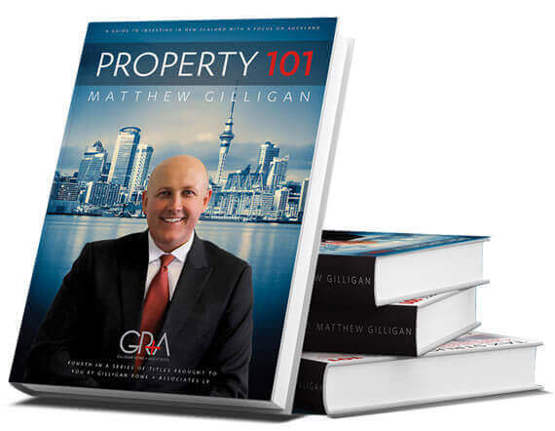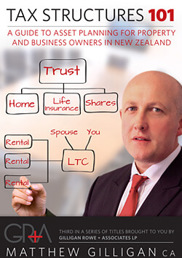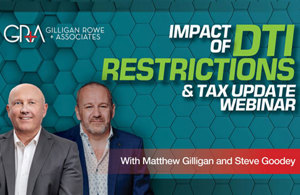
You have to ask whether the Reserve Bank has manufactured a premature end to what is traditionally a 10-year cycle ending in a year with a 7 in it. If you look back over the last three cycles, they have peaked in 1987, 1997 and 2007. It would be tempting to observe we are heading for a peak in 2017, as anecdotal as that may seem. It certainly feels that way because when you look at the market, irrational amounts are being paid for property in Auckland with yields at seemingly historic lows, while the regions are cycling behind Auckland and playing catch-up. This is very reminiscent of the last two property cycles that I have participated in, and everything seems to be trundling along in a fairly predictable fashion.
But enter the loan-to-value ratio (LVR) rules that have been increasingly aggressive over the last three Reserve Bank interventions. The RBNZ started with an 80% LVR limit in October 2013, and extended this in November 2015 to 70% for Auckland investors. Now they have brought in a 60% LVR rule for investors throughout New Zealand which officially comes into force on 1 October 2016. Since the Reserve Bank announced it, banks have been expected to apply the rules within the spirit that they are intended in the months prior to October. So who is affected by these rules and what is happening out there?
What I am seeing are very buoyant economic conditions with phenomenal demand for housing right across the country, juxtaposed with a very tight lending market. Not only are investors struggling to adapt to the curve ball the Reserve Bank has thrown at them, so are the banks. Take my own affairs. I recently purchased a small property for subdivision in Auckland and merrily forwarded the sale and purchase agreement to my banker expecting a joyous reply that the finance documents would be forthcoming and no further information would be required, as is traditionally my interaction with my BNZ banker. To my astonishment, he replied saying that due to the LVR restrictions I needed to revalue 11 properties that I held with that bank and, subject to proving that my LVR was less than 60%, he would continue to lend to me. While I expect to be able to comply with this, the fee to get these valuations is $13,000 and there is a six-week delay. In the context of obtaining finance for a relatively quick settlement, this is a very unhelpful position!
Luckily I have other bankers and access to other capital, so I will be able perform on the contract. However, I am seeing a number of clients getting caught out because they are assuming they can continue obtaining finance with relatively few hurdles being put in front of them, only to discover the banks are being sticklers for requiring valuations and compliance to prove the investor's LVR position. This is slowing down finance applications and for some, taking them out of the market altogether.
For example, I saw one client last week who had a family home that was 30% financed. They purchased a new family home and borrowed all of the money, moved into this and rented out the existing home. In addition, they had two rental properties at around 70% LVR. This client was previously compliant and well within the LVR restrictions, but when I did the maths on the overall position they had a 74% LVR. With investment lending restricted to 60% on their investment properties, they were effectively equity locked and unable to borrow another dollar until they sold at least one property and offloaded around $700,000 worth of asset value.
This was exactly the opposite of what they thought the position was. They were in fact planning to buy another investment property because they have high incomes and expected the banks would continue to lend to them. When I pointed out that the scaling of the assets was 60% on investment properties and 80% on their home, and the overall LVR position did not support their intentions, they were quite shocked. On top of this, they had also created a tax problem, as due to the LVR restrictions the bank would not refinance the debt on the old home into an LTC.
Alternative banking
I want draw to investors' attention the existence of non-bank lenders like Liberty and Resimac, who can lend on investment property and homes at ratios greater than the main banks because they are not governed by the Reserve Bank rules. These non-bank lenders will lend 80% on investment properties across the country, although they have limited appetite for lending on apartments and in small towns. Their cost of funds is roughly 1% greater than main bank lenders, but as an investor you get a third of that back, so effectively that is a 0.67% after-tax funding cost premium for the privilege of getting an extra 20% LVR out of the lender. I therefore see these lenders becoming more and more mainstream and utilised by small investors.
However, I note that such lenders do not lend to larger investors because they target the small portfolio owners and do not support those with an extensive portfolio position, as it is not their core business. So this strategy of using non-bank lenders is limited to the smaller investors and is certainly worthwhile looking at if you are seeking to participate in the flattening market manufactured by the new LVR rules.
New builds still supported at 80% LVR
Don't forget that if you are increasing supply of housing stock, the 60% LVR restriction does not apply. In my own portfolio I have been purchasing subdivisible properties and where the initial property has a house on it, the banks pegged me back to a 60% LVR because that initial house is considered to be a rental property. However, the banks are allowed to lend 80% on the subdivision costs and the construction costs, and at the end they can lend the higher of 80% of the market value of the developed housing stock or 60% on the original house cost plus 80% of cost of completion on subdivision and build costs.
This formula can reveal good gains for investors once you have created a capital gain through the development of new houses, and combines two of my favourite strategies: developing to hold (which is tax exempt for GST and income tax) and exploiting the LVR rates at 80% for new supply. I encourage clients to look into this matter because there still are good opportunities to make money with subdivisible properties, particularly in areas like Auckland where many investors are unable to purchase in this environment and are unaware of the higher LVR lending for new builds and subdivision.
Summary
Whether we have met an early end to this cycle in 2016, or whether we see another year of muted growth to a peak in 2017, no one knows. With so much cash internationally seeking yield in a low interest rate environment, it is possible that the cycle could extend past 2017. In any event, if we see continued growth as we have in the last five years, it is inevitable that the Reserve Bank will stamp their feet harder and the LVR rules will become even tighter. Coupled with proposed hybrid income lending restrictions, I can only see the finance markets getting tighter and tighter, and this must slow house price inflation over the next couple of years. I will say to investors in closing that if these rules bite harder and longer than anticipated, it will be the quick and the dead in terms of getting your finance and capacity established with the banks. As the rules bite deeper house prices could fall, and if you leave it too long before getting your assets revalued and requalifying with the banks, you might find that you get coupled with an LVR at 60% and a fall in market price.
Happy investing.

Matthew Gilligan
Managing Director and Property Services Partner
Did you like this article? Subscribe to our newsletter to receive tips, updates and useful information to help you protect your assets and grow your net worth. We're expert accountants providing expert advice to clients in NZ and around the world.
Disclaimer: This article is intended to provide only a summary of the issues associated with the topics covered. It does not purport to be comprehensive nor to provide specific advice. No person should act in reliance on any statement contained within this article without first obtaining specific professional advice. If you require any further information or advice on any matter covered within this article, please contact the author.
Comments
Testimonials
What I enjoyed the most about Development School was the case studies, range of speakers, Auckland focus, access to slides/videos, and that the information presented can prevent costly mistakes.
- S Wilson, July 2022
Property 101by Matthew Gilligan
Investing in residential property?
Put this at the top of your reading list.
If you're investing in residential property, seeking to maximise your ability to succeed and minimise risk, then this is a 'must read'.
Matthew Gilligan provides a fresh look at residential property investment from an experienced investor’s viewpoint. Written in easy to understand language and including many case studies, Matthew explains the ins and outs of successful property investment.
- How to find the right property
- How to negotiate successfully
- Renovation do's & don'ts
- Property management
- Case studies and examples
- and much, much more...









































